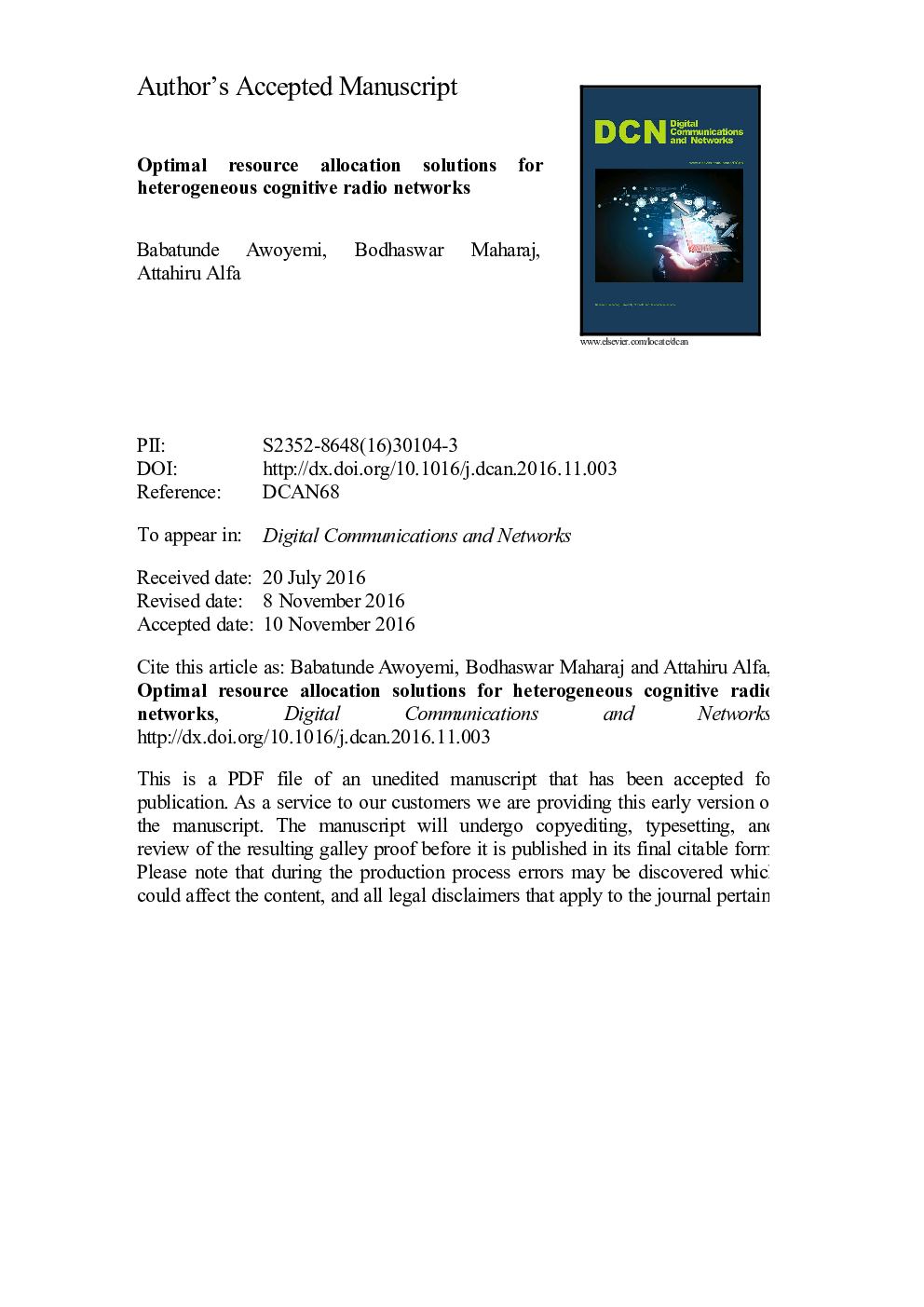| Article ID | Journal | Published Year | Pages | File Type |
|---|---|---|---|---|
| 5000860 | Digital Communications and Networks | 2017 | 15 Pages |
Abstract
Cognitive radio networks (CRN) are currently gaining immense recognition as the most-likely next-generation wireless communication paradigm, because of their enticing promise of mitigating the spectrum scarcity and/or underutilisation challenge. Indisputably, for this promise to ever materialise, CRN must of necessity devise appropriate mechanisms to judiciously allocate their rather scarce or limited resources (spectrum and others) among their numerous users. 'Resource allocation (RA) in CRN', which essentially describes mechanisms that can effectively and optimally carry out such allocation, so as to achieve the utmost for the network, has therefore recently become an important research focus. However, in most research works on RA in CRN, a highly significant factor that describes a more realistic and practical consideration of CRN has been ignored (or only partially explored), i.e., the aspect of the heterogeneity of CRN. To address this important aspect, in this paper, RA models that incorporate the most essential concepts of heterogeneity, as applicable to CRN, are developed and the imports of such inclusion in the overall networking are investigated. Furthermore, to fully explore the relevance and implications of the various heterogeneous classifications to the RA formulations, weights are attached to the different classes and their effects on the network performance are studied. In solving the developed complex RA problems for heterogeneous CRN, a solution approach that examines and exploits the structure of the problem in achieving a less-complex reformulation, is extensively employed. This approach, as the results presented show, makes it possible to obtain optimal solutions to the rather difficult RA problems of heterogeneous CRN.
Related Topics
Physical Sciences and Engineering
Engineering
Control and Systems Engineering
Authors
Babatunde Awoyemi, Bodhaswar Maharaj, Attahiru Alfa,
